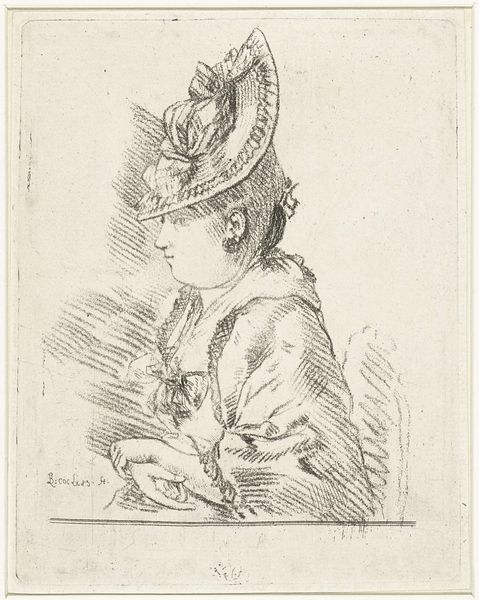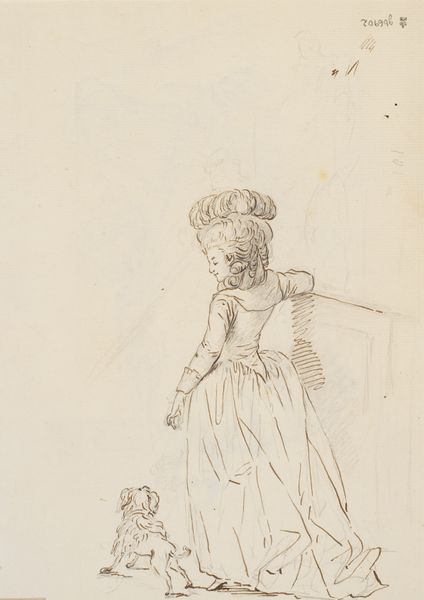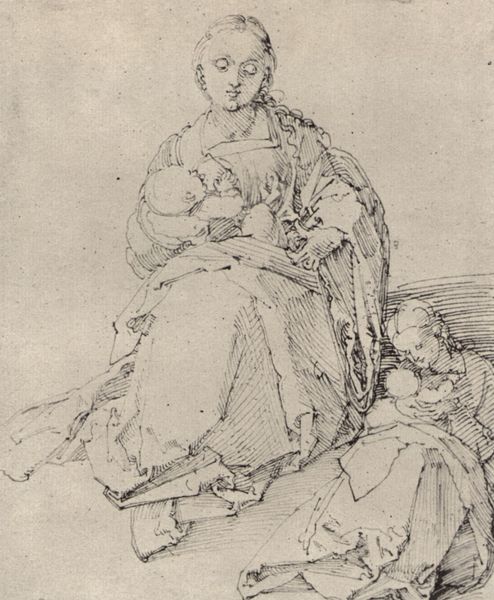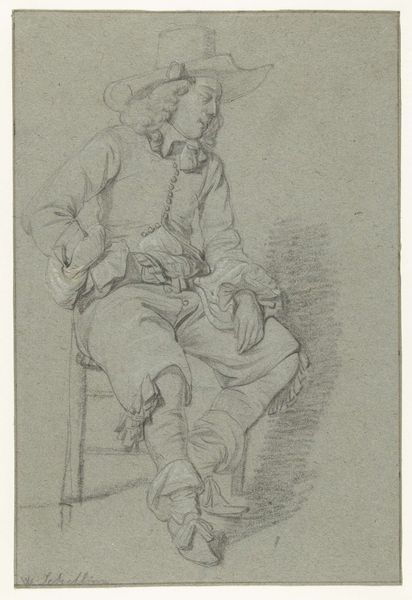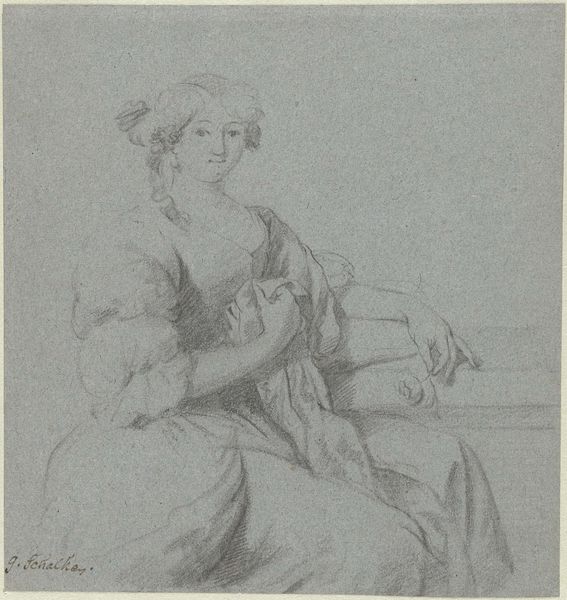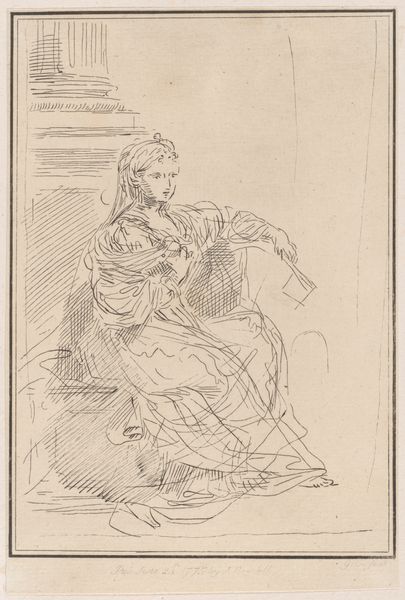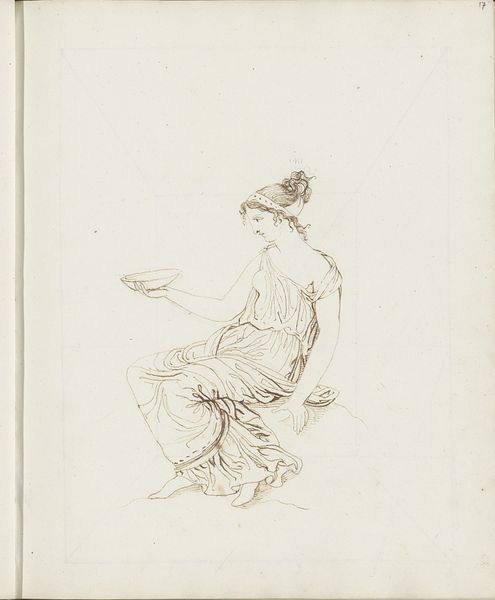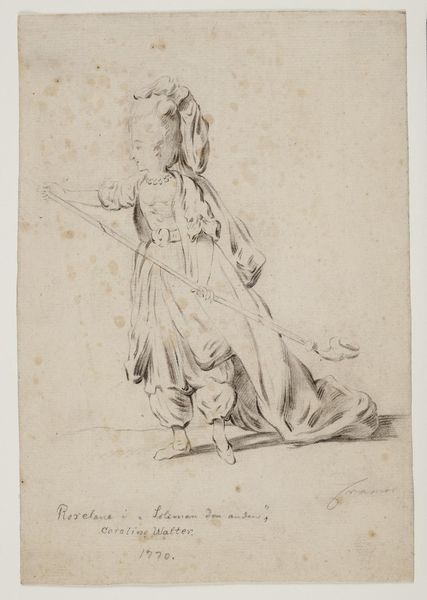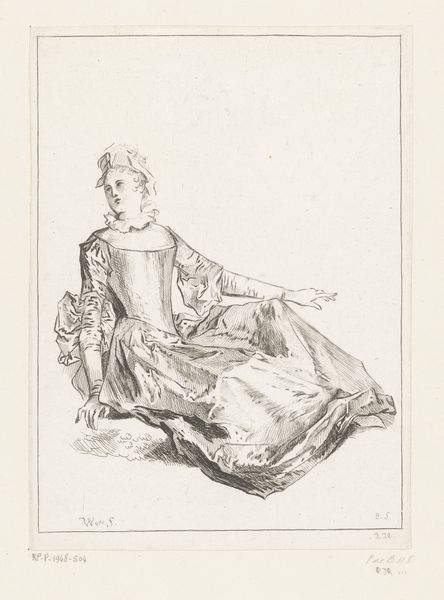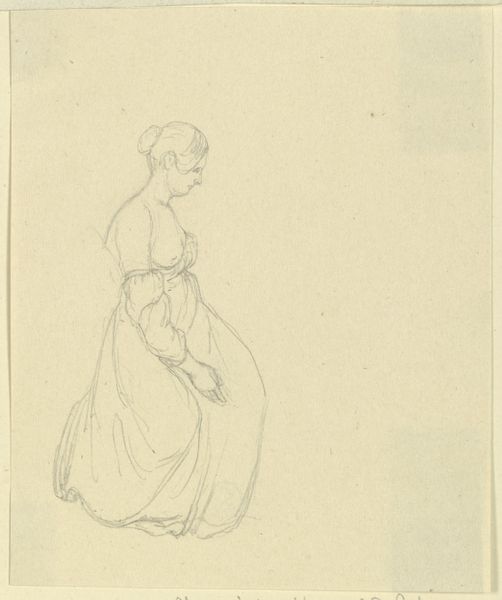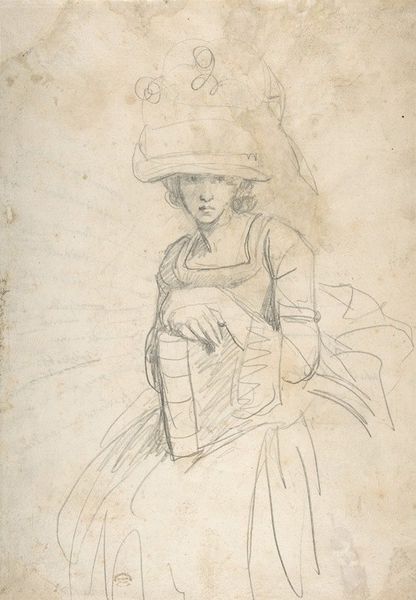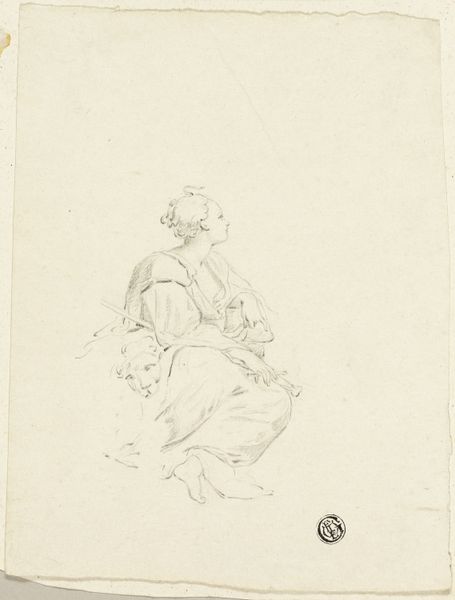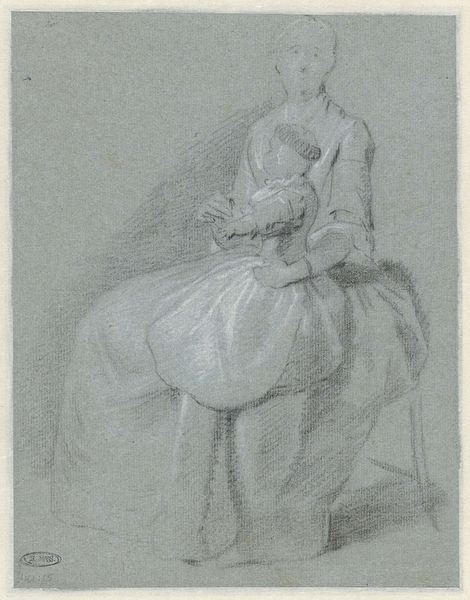
Dimensions: height 281 mm, width 220 mm
Copyright: Rijks Museum: Open Domain
Editor: This delicate pencil sketch by Hendrik Pothoven, titled "Standing Child Holding onto a Chair," dates back to the late 18th century. There’s something very sweet and intimate about it. The child's gesture, holding on for support, speaks of fragility and innocence. What cultural echoes do you hear when you see this piece? Curator: This drawing resonates deeply with the symbolic weight of childhood in the Rococo period. Children were often depicted as miniature adults, echoing societal values and aspirations. The ornate clothing, including the feathered hat, isn't just charming; it’s a signal of social standing. The child holding the chair signifies their dependence, but it also symbolizes potential, and perhaps even the future legacy of their family. Doesn’t the chair almost feel like a throne in waiting? Editor: That's a striking image, a throne in waiting! So, even in something as seemingly simple as a child holding a chair, there’s a coded message about social structure? Curator: Precisely! And look closer—notice how the soft lines create a sense of transience. The child is caught in a fleeting moment, echoing the Rococo fascination with the ephemeral nature of beauty and life. Think about the weight carried by depictions of children. It represents inherited societal memory, as well as familial pride and expectations. Editor: I hadn’t considered that the lightness of the drawing actually underscores the symbolic weight of the subject. I’ll never look at a portrait of a child the same way again! Curator: Indeed! These images served as potent symbols within a specific cultural landscape. Seeing the past through symbols can be like finding lost heirlooms, now, can't it?
Comments
No comments
Be the first to comment and join the conversation on the ultimate creative platform.
